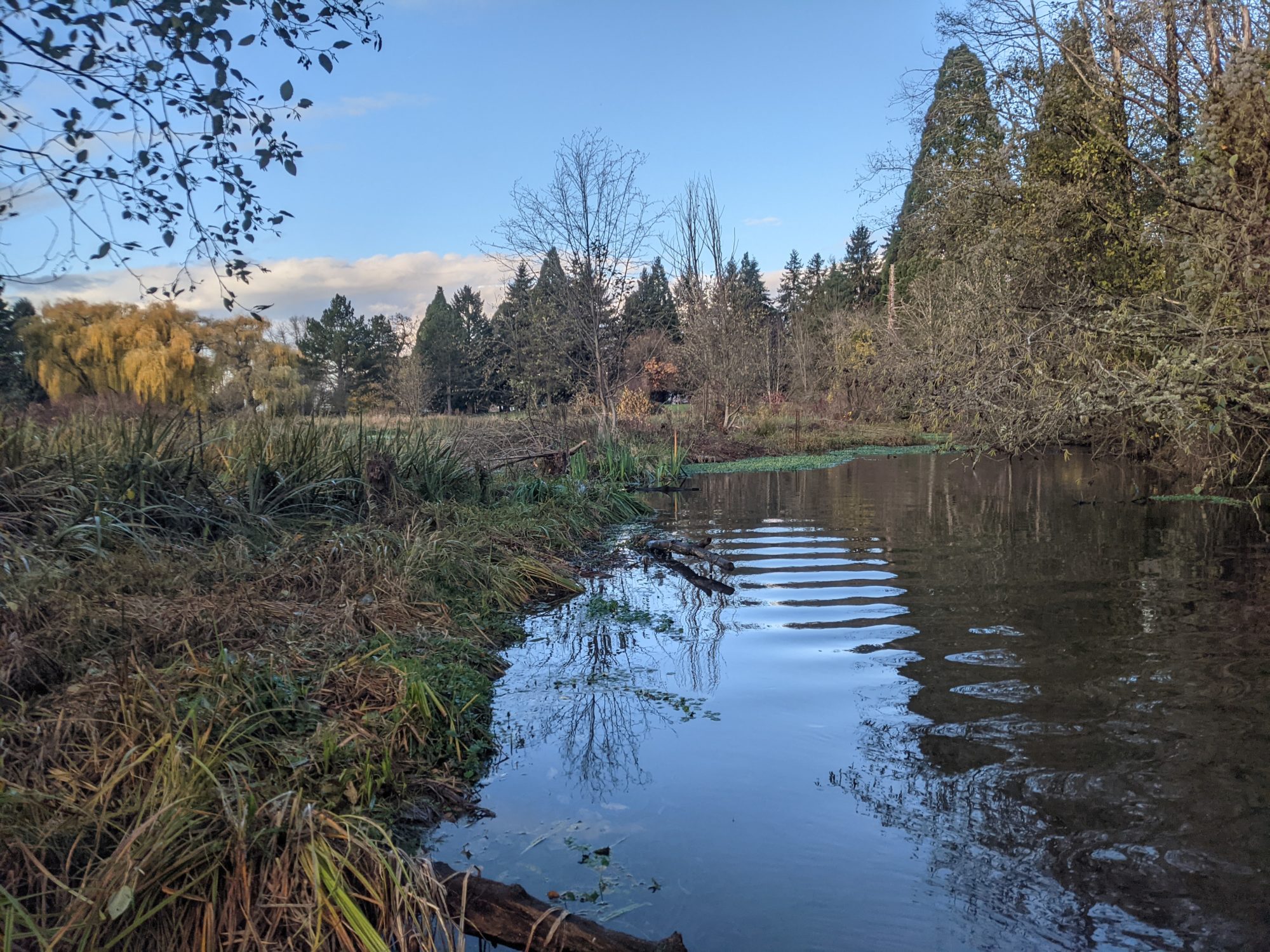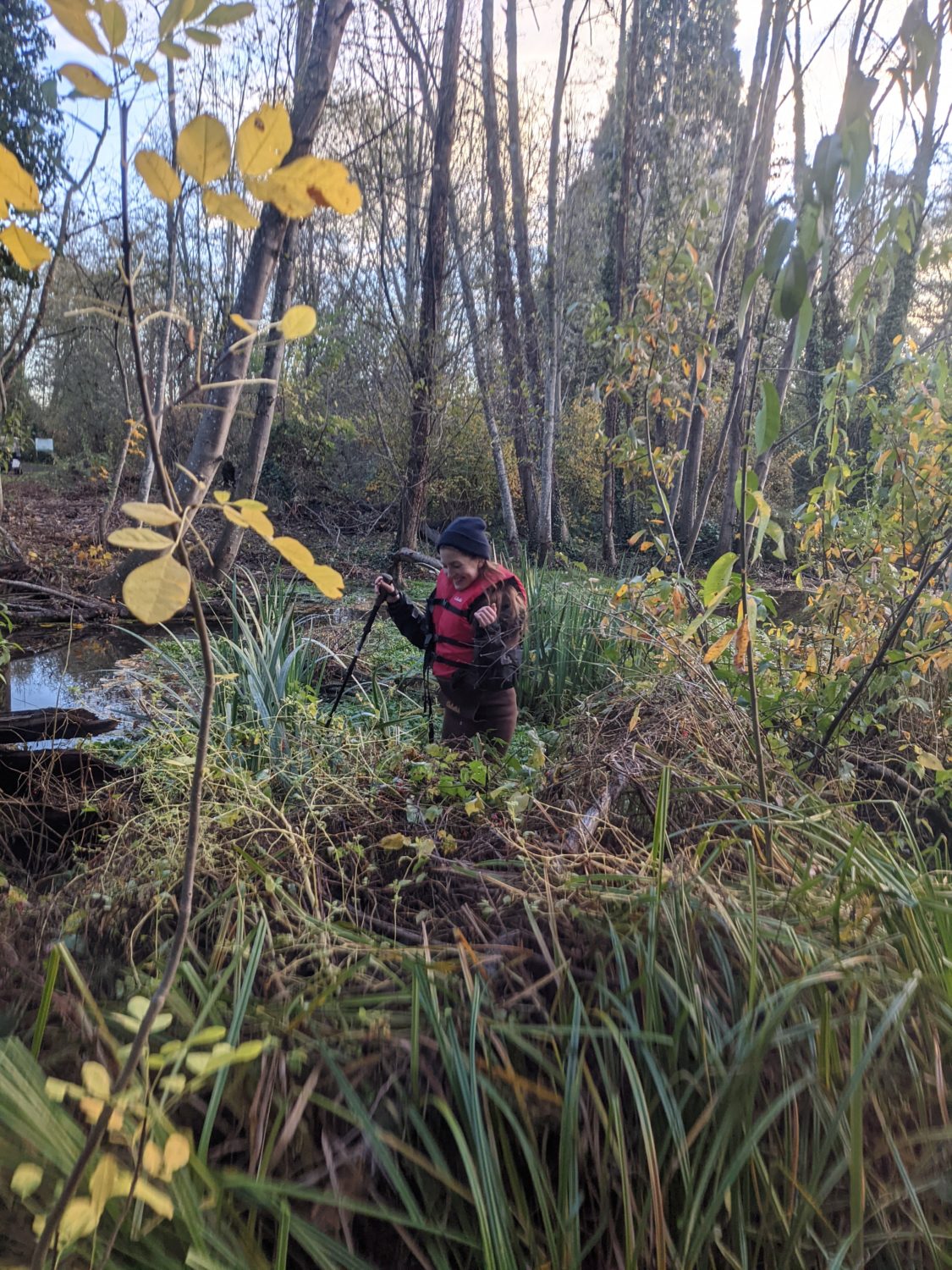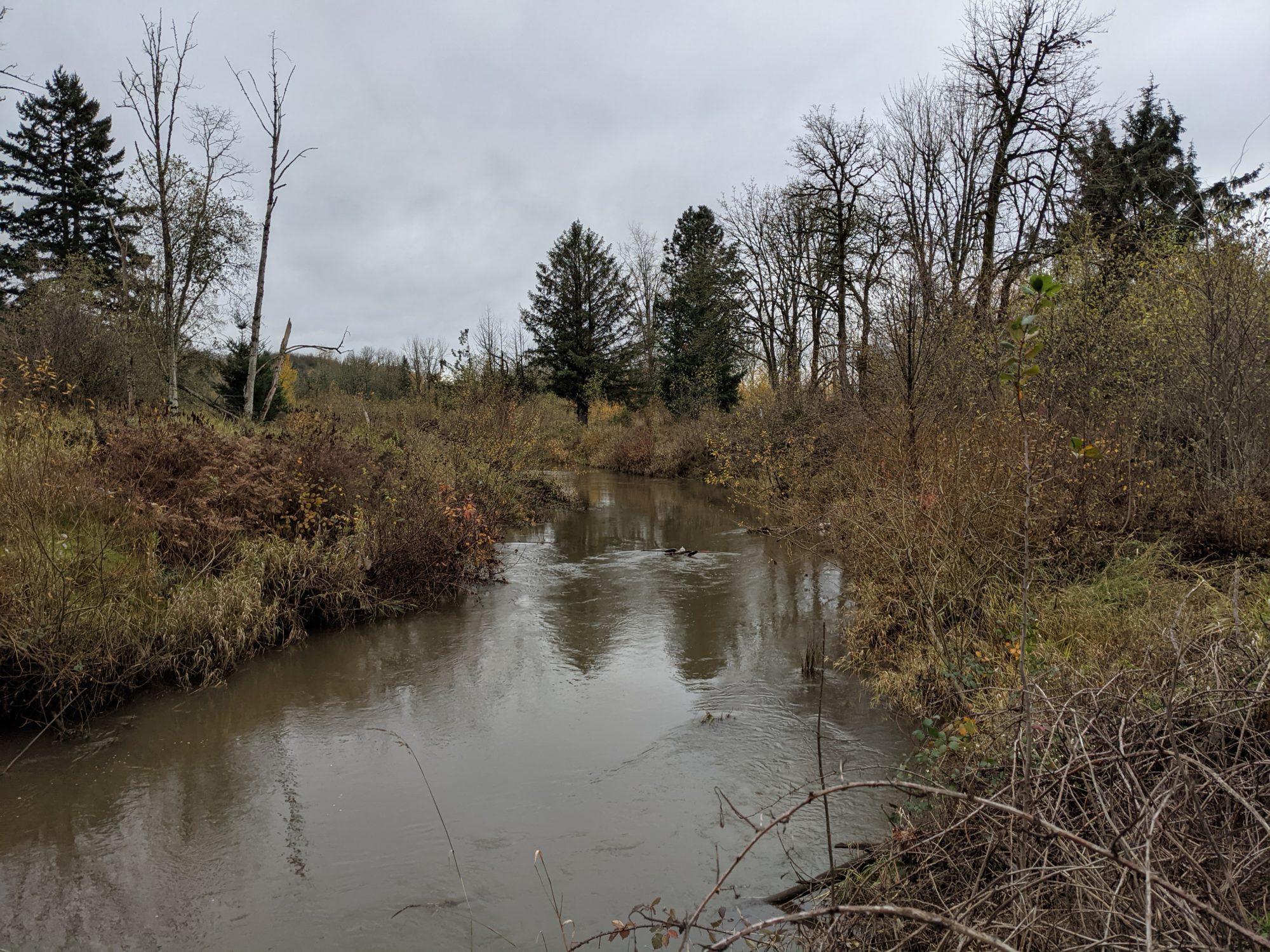Imagine a salmon. You may picture a school of sleek fish fighting their way upstream through some swift, wild river surrounded by dark forest. There could be bald eagles, maybe a grizzly bear or two. You probably didn’t imagine a busy suburban street, where a shallow creek emerges from a culvert and a single salmon slips slowly between two houses. But salmon are tough and adaptable. Although we’ve seen only one salmon so far during this year’s salmon surveys, it was proof these amazing fish continue to return to the Johnson Creek watershed as they have for millennia.

This is the tenth year we have organized salmon surveys in the watershed. Surveys began in 2011 with the help of the Oregon Department of Fish and Wildlife. Volunteers collect information during November and December on where salmon are found in the watershed and how many salmon are present. These data help us, as well as fisheries biologists, identify where salmon habitat in the watershed is good–and where it needs help.

Protecting and helping salmon is one of the main reasons the Johnson Creek Watershed Council was founded. Johnson Creek and its tributaries host chinook, coho, and steelhead salmon, but decades of development and pollution have left salmon populations a shadow of what they once were. While trash in the creek are the most obvious kind of pollution, to a salmon industrial pollutants, runoff from roads and farms, and high temperatures caused by lack of shade are the largest threats.

The pandemic made this year’s surveys challenging. Normally volunteers are trained how to search out and recognize different species of salmon and salmon redds. After learning how to move safely through water, they strap on a life vest and a pair of chest-high waders and walk through the creek, searching for signs of salmon. This year, we weren’t able to work with volunteers and the surveys were mostly conducted by staff and board members. We also got a lot of help from students taking the Restoration Ecology course at Reed College, and staff at our partner organizations have told us they’ve seen salmon during their own work: the City of Portland Bureau of Environmental Services (BES) reported a small school of salmon near Errol Heights Park. Unlike adult salmon returning from the ocean to spawn and then die, the juvenile coho spotted by BES were likely trying to move upstream to find a safe place to overwinter. For small fish like these, man-made barriers like dams and culverts can be impossible to pass. (You can read more about BES’s work to help make the creek friendlier to fish here.)
Salmon surveys are important and salmon are definitely present in the Johnson Creek watershed, but the small number of fish seen this year shows that actually finding fish is very challenging. That’s why we’re experimenting with a new way to find where salmon are, called eDNA. This novel method uses samples of water from a stream to detect small traces of DNA shed by salmon. If salmon DNA is found, it indicates there was recently a salmon or salmon redd somewhere nearby.
eDNA is a powerful and effective tool for locating salmon-bearing stream reaches, but it can’t replace surveys conducted by volunteers. We hope that next year we will once again be able to invite volunteers to help with salmon surveys. In the meantime, stay tuned for more information about our eDNA experiment.
